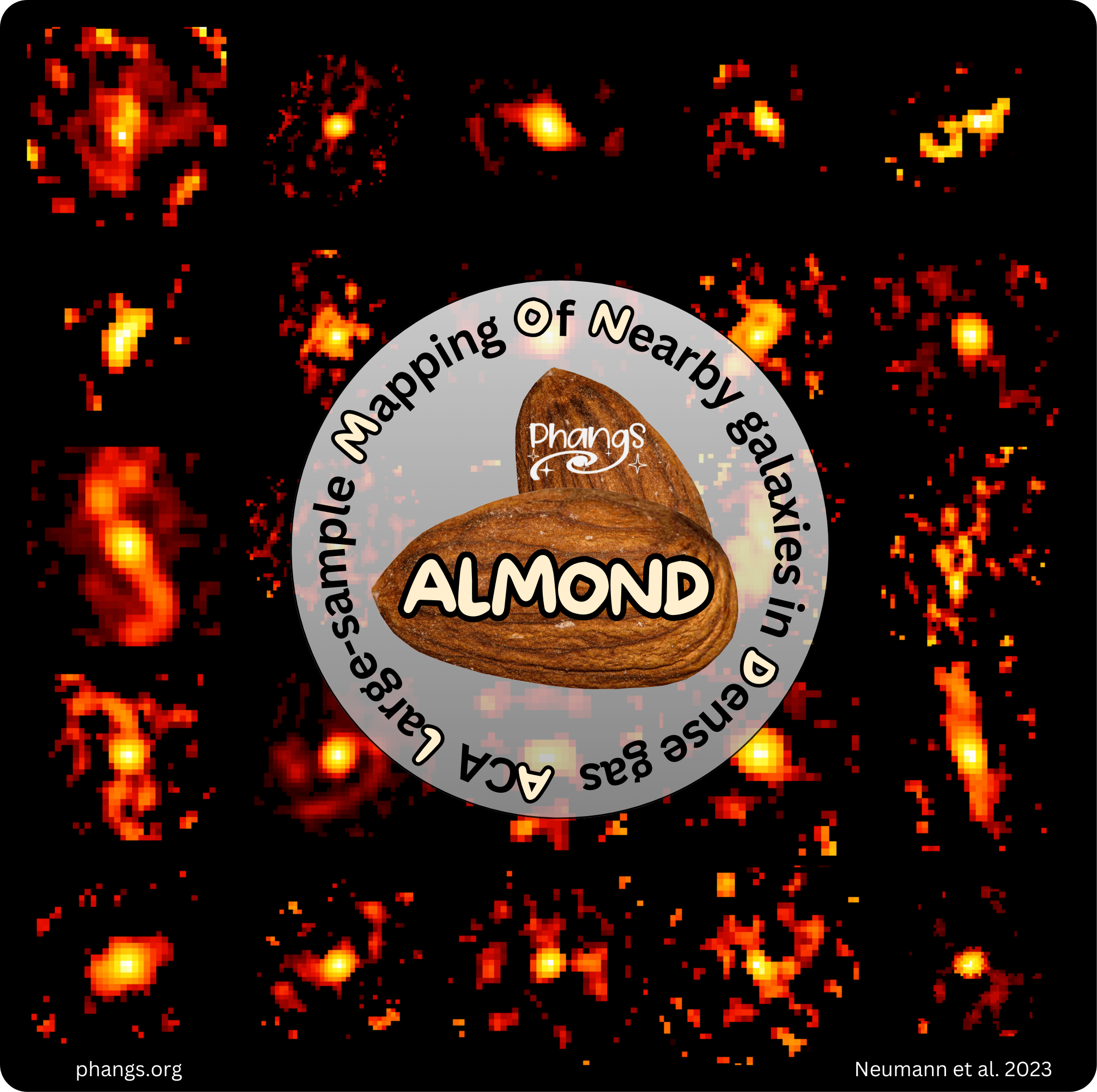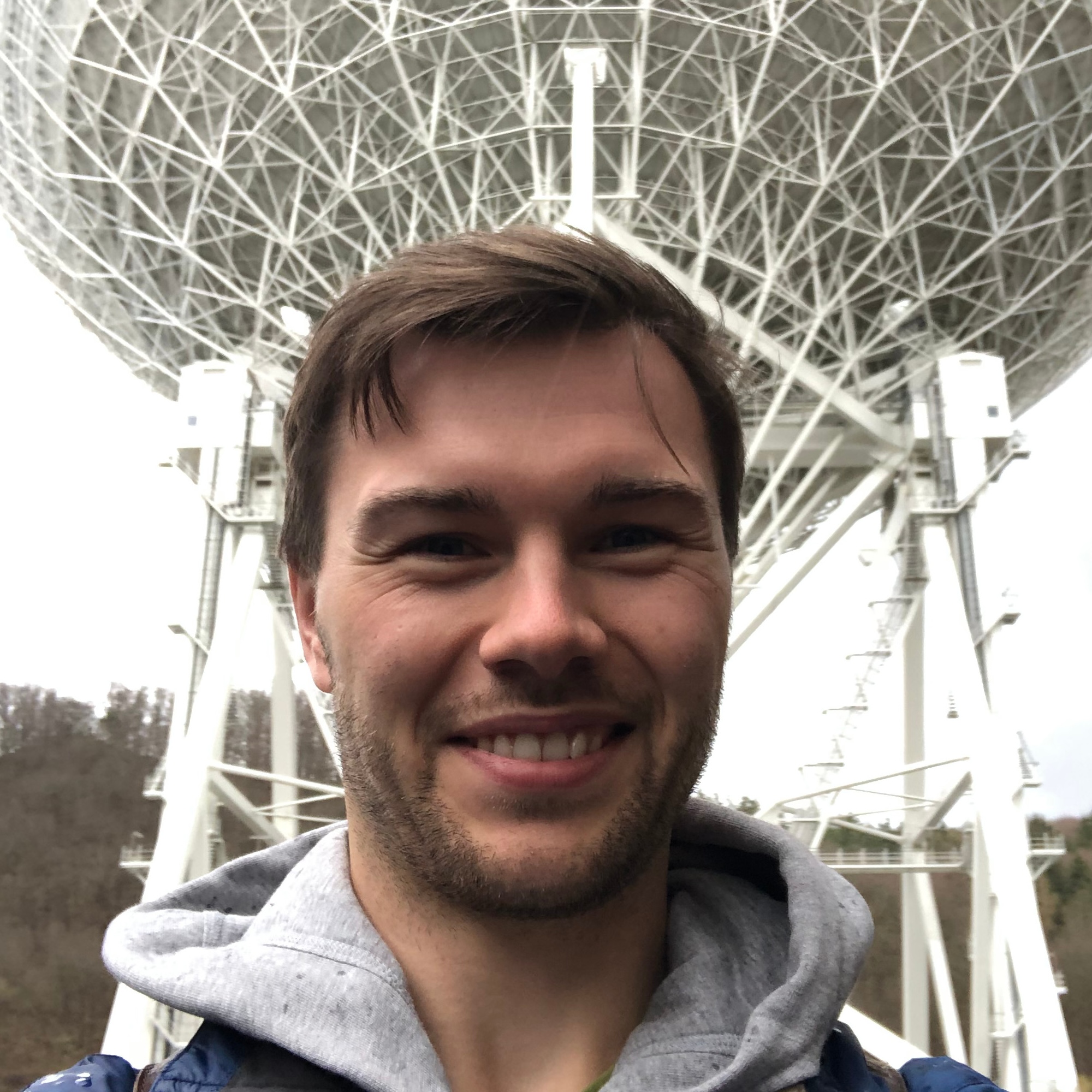About Me
I recently started my postdoc fellowship at the European Southern Observatory (ESO).
In the past I worked with Prof. Dr. Frank Bigiel at Argelander-Institute for Astronomy, Bonn University, where I did my PhD on "Dense gas and star formation from the Milky Way to nearby galaxies".
I am a member of the PHANGS and LEGO and SFF1601 collaborations.
My research is focused on understanding star formation, one of the most fundamental, yet poorly understand processes in the universe.
In particular, I want to understand how stars form in the densest parts of molecular clouds, the sites of star formation, and how the stars feed back energy into the interstellar medium driving turbulence and regulating star formation.
In my free time, I like to do a lot of sports, including running and CrossFit keeping me active and healthy.
First and foremost, I am a semi-professional athlethe performing Minigolf on the highest possible level in the country and internationally.
I am playing for the German national team and am currently the reigning World Champion.
Moreover, I also love the outdorrs and like to hike and travel, especially by exploring Europe with my camper van.
Education:
PhD Astrophysics, Bonn University, Germany (11/2021-12/2024)
Master Astrophysic, Bonn University, Germany (04/2019-09/2021)
Master Physics, Bielefeld University, Germany (04/2017-12/2018)
Bachelor Physics, Bielefeld University, Germany (10/2013-01/2017)
Research Interests:
Star Formation, Interstellar Medium, Molecules, Molecular Clouds, Stellar Feedback, Galaxies
Publications: ADS link!
Research
HOW IS STAR FORMATION REGULATED IN GALAXIES?

Check out My ADS
and My ORCiD
My research is about star formation, which is at the heart of many astrophysical processes and responsible for the origin of life, i.e. our very own species.
I want to fundamentally understand how stars form from the dense molecular gas and how star formation is interconnected with the matter cylce and evolution in galaxies.
To study the gas and the sites of star formation, we need state-of-the-art observatories across at basically all wavelength.
My research is highly driven by observations across the electromagnetic spectrum using telescopes like GALEX (UV), VLT (optical), JWST (infrared) and ALMA (radio).
Only by combining observations from all of these wavelengths, we get a comprehensive picture of star formation in the universe.
During my PhD, I have studied the dense molecular gas in neartby galaxies and the Milky Way.
With the ALMOND survey, I have studied the largest sample of nearby galaxies mapped in dense gas and connected how star formation occors in the dense gas to the properties of molecular clouds.
I have also worked on advancing technical tools such as the stacking technique and developed a publicly available Python code (PyStacker).
My current works focus on studying a Milky-Way analog, the nearby, spiral galaxy M100 aka NGC 4321, in great details using unmatched high-resolution ALMA data paired with MUSE and JWST observations.
Moreover, inside LEGO, I am investigating the physical conditions of star forming regions in the Milky Way with the goal of connecting to the extragalactic regime.
You can find more details on each of these projects below.
The ALMOND survey: molecular cloud properties and gas density tracers across 25 nearby spiral galaxies with ALMA
(Paper 1, Paper 2)
With the PHANGS collaboration, we mapped 25 nearby, star-forming galaxies in dense gas tracers (HCN, HCO+, CS) with ALMA at 1-2 kpc scales.
Currently, this is the biggest survey of dense gas maps of nearby galaxies.
In addition, it comes with fantastic observations of other state-of-the-art telescopes like GALEX, WISE, MUSE, JWST and HST and with ALMA in CO(2-1) at 100 pc scales
making this a perfect playground to study star formation, dense gas and molecular clouds properties.
In this first study, we addressed the missing link between kpc scale spectroscopy (dense gas, star formation) and molecular cloud properties (mass, turbulence and graviational boundedness).
We showed that the star formation efficiency of dense gas is not a universal constant.
Instead, it varies systematically with the properties of molecular clouds such that more massive, more turbulent clouds are less efficiency converting dense gas into stars.
A results also predicted by turbulent cloud models.
Fun fact: "Dense gas smeels like almonds", i.e. hydrogen cyanide (HCN), one of the major molecules observed by this survey smells like almonds.
However, don't eat it, it's toxic, just observe it!

Spectral stacking of radio-interferometric data
(Paper Link)
Mapping dense molecular gas in other galaxies is challenges, because even the brightes lines (HCN, HCO+) are 10 to 100 times fainter than the the low-J CO transitions.
Therefore, often we rely on spectral stacking to recover more emission hidden in the noise.
In this paper, we present such a stacking tool and apply it to simulated ALMA observations that mimic the PHANGS-ALMA setup.
We show that stacking is able to recover faint emission without bias and returns meanignful uncertainties on the stacked values.
Another key result is that when using interferometric data only, i.e. without correcting for the short-spacing from single dish observations,
we expect to filter out up to 50 % of the flux thus stressing the need for total power observations with the PHANGS-ALMA setup.
The Python code is publicly available, so feel free to check it out (PyStacker).

M100: A high-resolution view on dense gas and star formation with ALMA, MUSE and JWST
(Paper Link)
M100 a.k.a. NGC 4321 is one of my favourite galaxies. It is a spiral, star-forming galaxies just like our Milky Way.
Below you can find a beautiful JWST 3-color image that I created from the PHANGS-JWST data using the mid-infrared bands.
Recently, we mapped this galaxy in dense molecular gas using more than 200 hours of ALMA time.
Up to date, this is one of the deepest, high-resolution full-galaxy maps of dense gas tracers ever produced and a perfect prospect to study star formation in an etragalactic target.
In a first study of this data, we investiagte variations of the density structure of the molecular gas and its ability to form stars within different morphological and dynamical environments.
We find that the star formation efficiency is much lower (by a factor of 10) in the centre of the galaxy, just like observed in our own Milky Way.
Moreover, we find evidence for shearing motings and rapit cloud-cloud collisions supressing the star formation in the bar of the galaxy.

The LEGO survey: Line Emission as a tool for Galaxy Observations (soon to be submited)
With LEGO we mapped 14 star forming regions in the Milky Way using the IRAM 30m telescope.
What makes this survey so unique is that it looks at these regions with "extragalactic eyes".
This means, we adopted the methodolgy of extragalactic observations to the Galactic regime, by both matching the
tracers being observed and the size of the regions being mapped.
With this, we can for the first time connect Milky Way studies of star formation to the extragalactic field in a meaningful way.

Contact
Email:
lukas.neumann@eso.org
Address:
European Southern Observatory
Karl-Schwarzschild-Straße 2, 85748 Garching bei München, Germany






